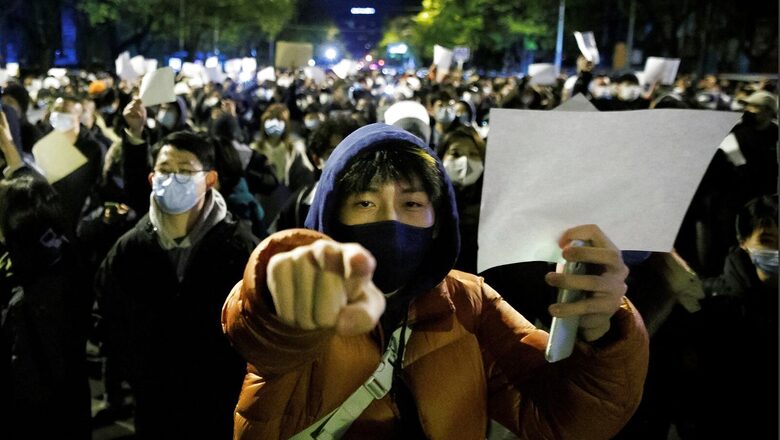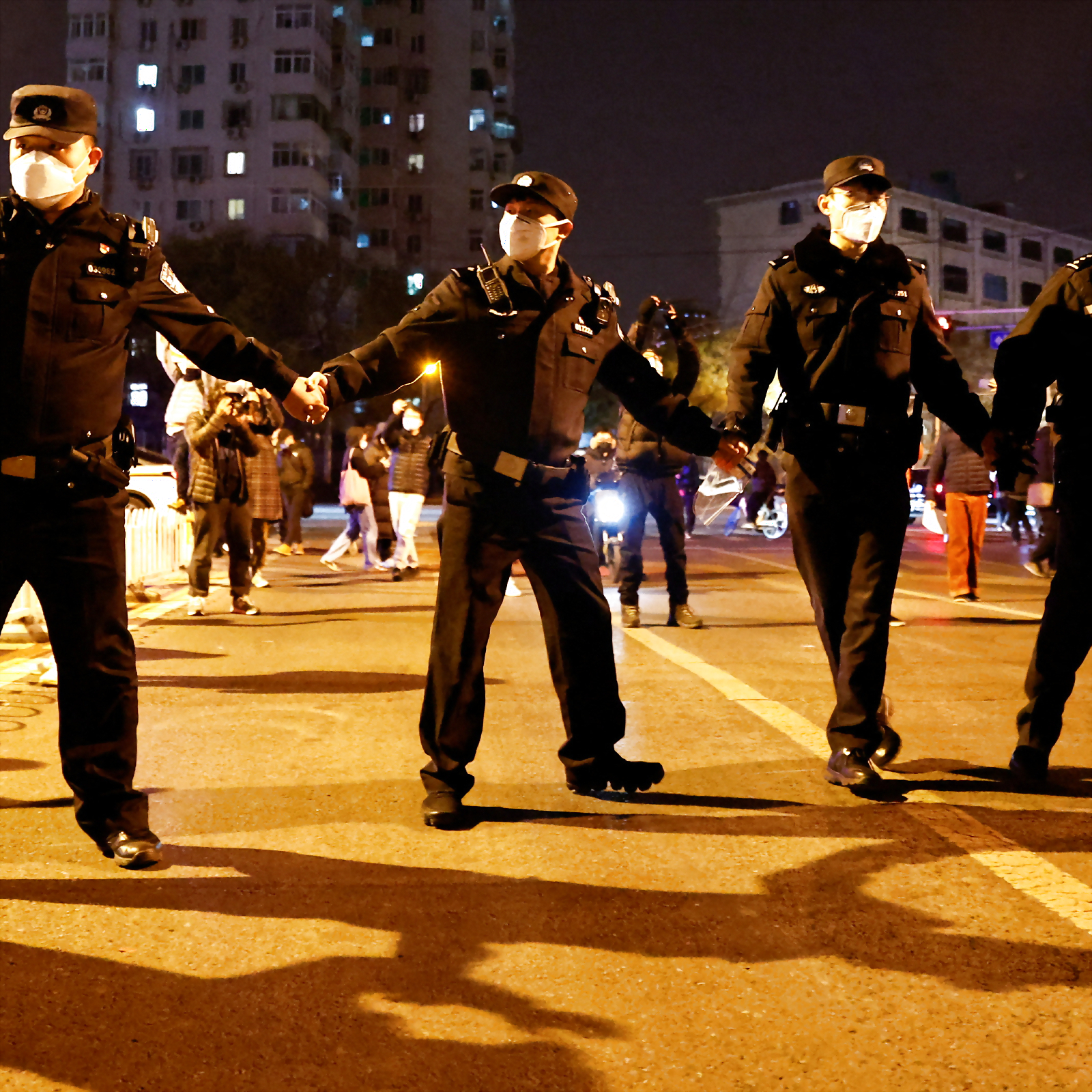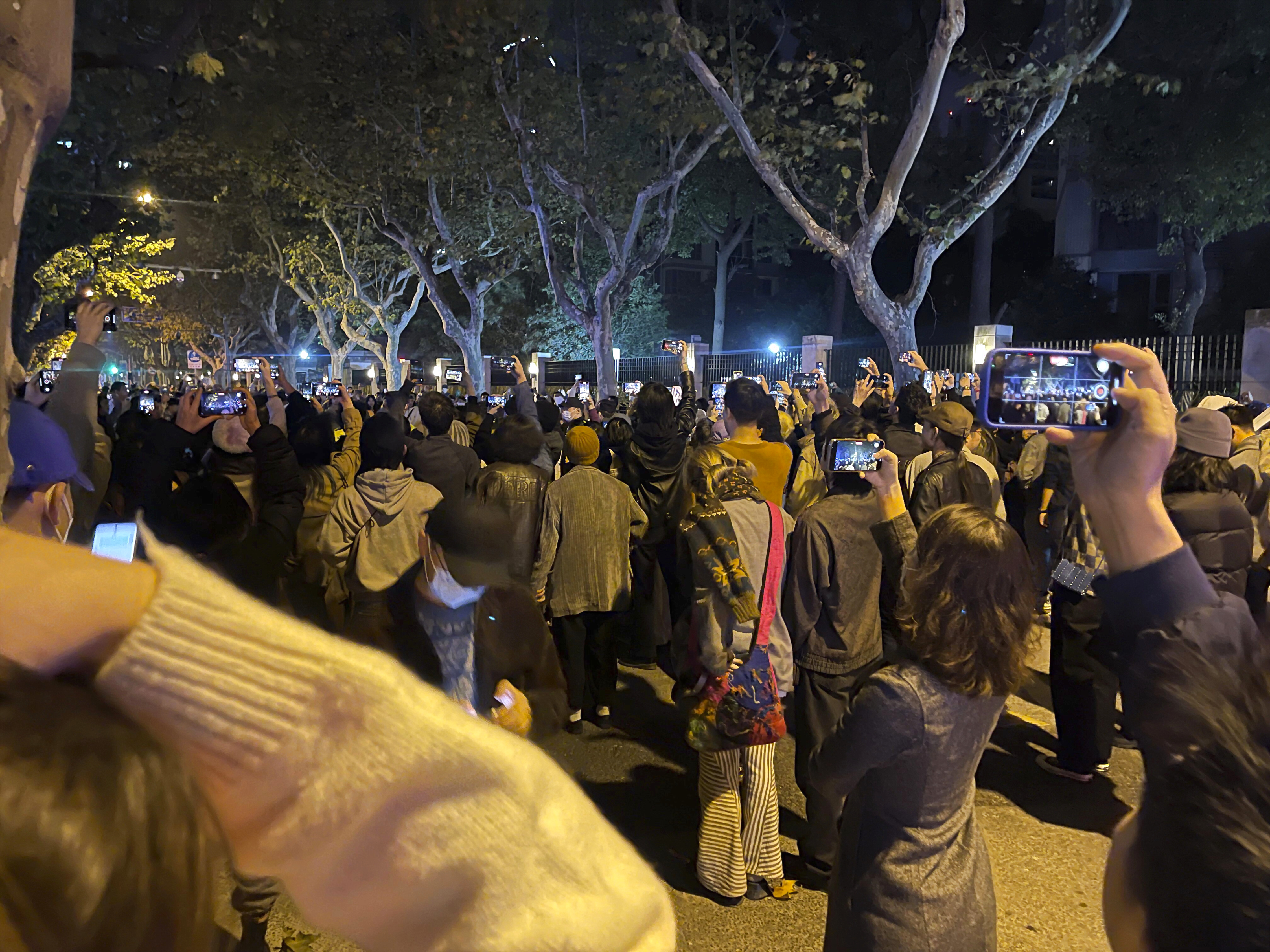
views
The protests ongoing in China are rare in two aspects – their unified strength as opposed to being dispersed, and their direct coming down on President Xi Jinping and the Communist Party of China.
“Down with Xi” is a slogan one may not have thought of to have been said, much less by hundreds, but it is now ringing the streets of Beijing, Shanghai and many other Chinese regions. The people are protesting Beijing’s ‘Zero Covid’ approach to control coronavirus cases; which call for dynamic measures to suppress infections. The policy initiates strict lockdowns and frequent testing – which have affected the Chinese economy and strained the population after almost three years since the pandemic began.

Protesters, whose are now sloganeering against Xi (who recently secured his third term as the Communist Party’s leader) and the CPC, and call for the opening up of China and relaxation of the Covid-19 norms that have worn out most citizens.
Meanwhile, cases in China continue to rise – over 39,000 recorded in the past 24 hours. The cases may be the highest the country has been seeing since the virus first emerged in Wuhan and spread to other countries, but the nation’s peak numbers are still way lower compared to what others saw during their own peaks. According to a report by BBC, China’s death toll has remained low since the outbreak began – the official figure is now just over 5,200.
This reported figure equates to three Covid deaths per million in China, compared to 3,000 in the United States and 2,400 in the United Kingdom.

Despite, the public’s anger reached a tipping point after a fire killed 10 and injured nine in the Urumqi region. People believe that it was due to the strict lockdowns initiated by the government that the people could not escape or receive adequate help. Social media is rife with reported video clips of the incident, which show residents screaming for help while being trapped in the burning building.
Now, as protests escalate, China seems to be employing its usual methods of suppression – from detentions, arrests, online censorship to cull them. Beijing has had a bloody history of shutting down its protests – with the Tiananmen square incident a horrifying reminder, where brutal military action on unarmed protesters in 1989 reportedly killed 20,000 people. However, the Chinese government has maintained that only 241 casualties were caused in the incident.
The BBC said on Sunday that one of its journalists in China had been arrested and beaten by police while covering protests against the country’s zero-Covid policy. Reports also describe Chinese police using pepper spray on agitators, and censoring protest-related content on social media.
The defiant and rare dissent against Xi, whose third consecutive term is being watched amid a strained global situation, is definitely not good for him. Xi recently broke with norms and extended his rule for another term at the 20th Party Congress, potentially paving the way for lifelong rule. China’s most powerful and authoritarian leader in decades, he has launched a massive crackdown on dissent, both within the party and in wider society.

Resolutions issued during the 20th Party Congress had revealed constitutional changes that enshrine Xi the individual and his political ideas as the core of the CCP and its ideology, raising concerns about a growing Maoist “cult of personality” centred on Xi, according to a report by the Guardian. Whether Xi’s cult-like status remains strong within the party or is affected by the supposed ‘disastrous’ Covid-19 policy and the resultant protests, is to be seen.
For now, the protests are going strong. Beijing had seen similar protests right before the 20th party Congress against Covid policies, which the government had swifty crushed.
A commentary in Bloomberg of the challenge that lies ahead for Xi says that a quick adjustment that allows people on the ground to feel the promised relaxation of controls may be enough to quell this outburst.
However, the longer the unrest continues, the more it spreads, and, most importantly, the more openly it targets the party and Xi, the greater the likelihood of a severe crackdown, which would hit an already-weak economy and further erode investor confidence, it states.

But Xi Jinping’s natural instincts lie in suppression of dissent, an example of which can be the crushing of the 2020 protests in Hong Kong against Beijing’s national security law. The demonstrations were crushed by wide detentions, arrests and online censorship.
According to another Bloomberg report, Goldman Sachs Group has predicted that China’s Covid Zero policy could be phased out by April of next year. Hui Shan, the chief China economist, told the publication that the exit could come sooner than expected and that it could be “disorderly.”
Goldman Sachs forecasted a 30% chance of China reopening before 2023 Q2. Hui said an earlier reopening is possible, but that a second-quarter exit is more likely. “The central government may soon need to choose between more lockdowns and more Covid outbreaks,” Shan was quoted as saying. Chinese authorities in smaller cities have struggled to ‘balance’ between reopening the economy and controlling the spread of Covid-19. Read more
Read all the Latest Explainers here
















Comments
0 comment